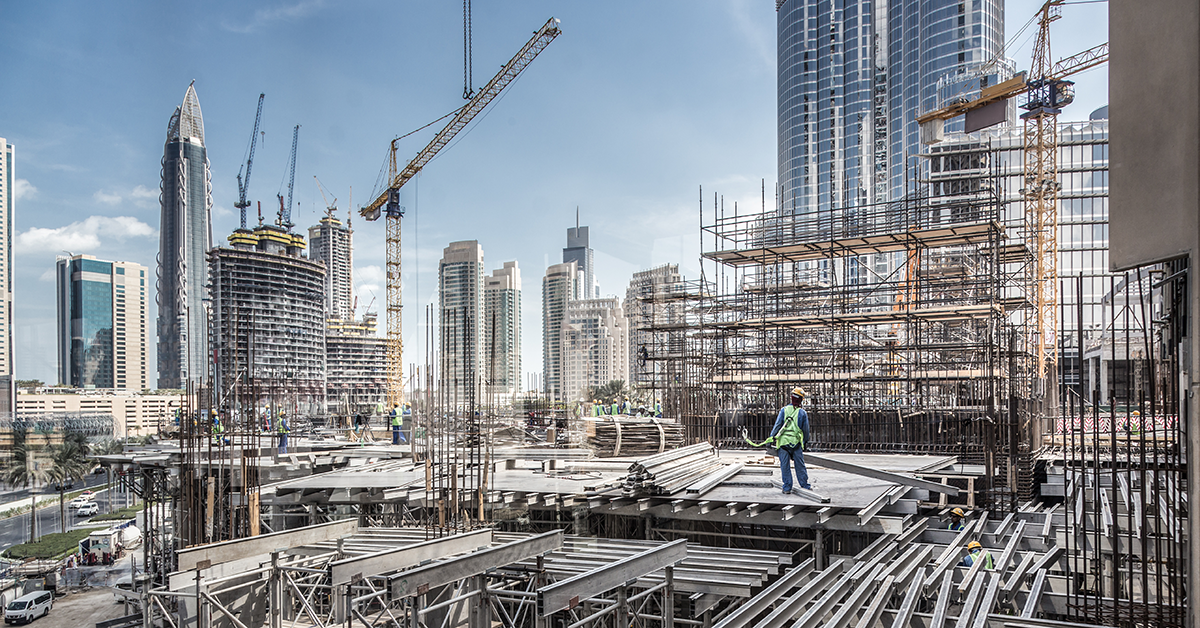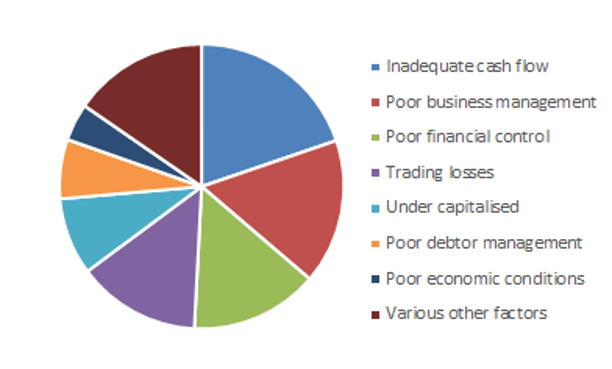Company Insolvency Rates Rise on Previous Years
Statistics released by the Australian Securities and Investment Commission (ASIC)1 shows that despite a drop in company insolvencies in December 2019, there were still 5% more insolvency appointments in Australia for the year ended December 2019.
In NSW, insolvency appointments were up 16% annually, and Victoria observed an annual increase of 12%1 . These increases were primarily driven from the construction sector, which experienced an annual increase of 18%2 of companies closing down (EXADs3).

Other NSW sectors contributing to the increase included the ‘other business & personal services’ and ‘accommodation & food’ industries.
When looking Australia-wide at the worst affected industries, an annual rise in defaults was seen in accommodation & food (up 4% YoY), wholesale trade (31%), rental hiring & real estate (8%) and manufacturing (5%).
Construction insolvencies remain elevated
With an 18% annual increase in construction EXADs, the industry accounts for more than 20% of all companies entering administration.
In NSW, construction EXADs were up 38% year-on-year and in Victoria, there was a similar climb of 39%.
“These results won’t come as a surprise”, said Brad Walters, Head of Product and Rating Services at Equifax. “We’ve observed lower activity levels across construction with margin erosion, increased risk and higher levels of creditor exposure.”
Indeed, creditor wind-ups represent half of all construction EXADs nationally. From 2018 to 2019, there was a 14% increase in construction industry creditor wind-ups year-on-year4.
Court wind-ups, representing a quarter of all construction EXADs nationally, increased 16% year-on-year from 2018 to 20194.
The economic cost of insolvency is significant. Reviewing external administrator reports for the fiscal year ended 2019 ASIC reported, in addition to secured creditors, that 30% of construction EXADs had amounts owed to unsecured creditors of more than $500k (FY18: 27%)6. This is concerning as 96% of unsecured creditors are estimated to receive back less than 11c in the dollar. Also, in addition to unpaid employee entitlements ASIC reported that 27% of construction EXADs also had unpaid taxes of more than $250k (FY18: 25%).
“The good news is that there are early warning signs, and companies do not fail overnight”, said Walters. “While there are many reasons for failure, the primary causes typically emanate from inadequate cash flow, trading losses, insufficient capitalisation, poor business management or financial control. All of these factors are routinely reviewed by Credit Rating Agencies (CRA). The CRA industry is regulated and is monitored for its quality, integrity and independence of services provided.
Top Causes of Construction Failure5

Source: ASIC Australian Insolvency Statistics, External Administrator Reports
Some encouraging signs
While the number of dwellings approved6 in the 2019 calendar year was 19% lower than the previous year, in trend terms, total dwelling approvals continued to rise towards the end of 2019, increasing by 2.1% in December 2019. The value of residential building has climbed for four consecutive months.
The value of new loan commitments for housing rose 4.4% in December 2019, seasonally adjusted, and the value of new loan commitments for business construction7 continued to rise, also increasing 4.4% in December 2019.
Overall, we have also observed continued growth of business loan applications8. With an 8.1% improvement in the December 2019 quarter versus the same time last year, business loan applications have jumped by 4.7% since the September 2019 quarter.
“It’s encouraging to see NAB’s final monthly business survey of 2019 suggest that business conditions may have bottomed out”, said Walters. However, he stresses that forward-looking measures don’t imply a material improvement in the short-term.
“These early positive signs we’re seeing shouldn’t take away from the fact that there's still significant risk in the construction industry. We’re also yet to see the economic impact of Australia’s bushfires and the coronavirus outbreak,” said Walters.
Contact us to find out how we can help you protect your business from insolvency.
1ASIC Australian Insolvency Statistics, Table 2.1 - Insolvency appointments–Region summary, ANNUAL, QUARTERLY (released February 2020)
2ASIC Australian Insolvency Statistics, Table 1A.1.1 - Companies entering EXAD–Region and industry summary, ANNUAL, QUARTERLY (released February 2020)
3Companies entering external administration (EXADs), ranging from creditor wind-ups, court wind-ups, receiver appointments, voluntary administration, etc
4ASIC Australian Insolvency Statistics, Table 1A.2.1 - Companies entering EXAD–Appointment type and industry summary, ANNUAL, QUARTERLY (released February 2020)
5ASIC Australian Insolvency Statistics, External Administrator Reports, Table 3.2.2.2 - Initial external administrators' reports for Construction industry (released December 2019)
6ABS 8731.0 Building Approvals, Australia, December 2019 (3/2/2020)
7ABS 5601.0 Lending Indicators, December 2019 (11/2/2020)
8Equifax Quarterly Business Credit Demand Index for Dec 2020


